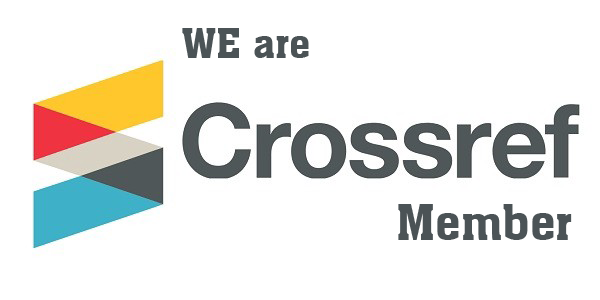Dermatophytosis in Al-Gabal Al-Akhader
DOI:
https://doi.org/10.54172/mjsc.v27i1.260Keywords:
Dermatophytosis , Al-Gabal Al-AkhaderAbstract
A study was conducted to survey some species of land snails in AL-Jabel El-Akhder area, and The damage caused by feeding of Theba pisana on cabbage plant Brassica This work was planned to know the causative fungal agents of dermatophytosis and the rate of distribution of this disease in Al-Gabal Al-Akhdar (El-Beida), Libya. A total of 253 cases of skin infection were collected from the dermatology unit at El-Thawra hospital, El-Beida, Libya. Our results showed that young ages were more liable to infection than adults and incidence of infection was higher in males than females specially in group (1-10) years, while in the rest of all age groups from (10 upto more than 40 years) the incidence were higher in females than males. Patients involved in this study represented different occupations. The higher incidence was recorded between school children. Our finding revealed the identification of three genus:genus Microsporum, where 42 (35.3%) strains of M. canis were isolated. Genus Trichophyton where many species were isolated T. violacenm 25 (21%), T. rubrum 24 (20%). T. verrucosum 10 (8.4%), T. mentagroohytes 4 (3.4%), T. schoenleinii and T. tonsurans 3 for each one (2.5%). And genus Epidermophyton in which 8 strains were obtained (6.7%) and identified as Epi. Floccosum. Scalp infection was the most common clinical finding in this work with higher incidence in males than females followed by Tinea corporis, Tinea unguium, Tinea barbae, Tinea pedis and Tinea cruis.
Concerning the sensitivity of isolated fungi to different antifungal agents it was found that all isolates were sensitive to Ketoconazol, Clotrirmazol and Itraconazol while showed resistance to the rest of antifungal agents which are used in this study.
Downloads
References
السماك ، مهدي.(1983) : التقنية المختبرة في الجراثيم المرضية ، دار النشر ـ مكتبة المعارف، (637 ـ643 ).
الوليد ،عبد العظيم احمد والمهدي ،احمد علي.(1996): ميكروبيولوجي الحيوان ـ المجلد الأول ، منشورات عمر المختار ، ( 1039 ـ 1049 ).
Abd El-Fattah, A., Hyti, M., Abdallah, M.A and Rieth, H. (1972): Tinea capitis in Rixadh (Saudi Arabia). Mykosen. 15-397. DOI: https://doi.org/10.1111/j.1439-0507.1972.tb01338.x
Abdel-Rahman, S.M., Sirnon, S., Wright, K.J., Ndjoountche, L and Gaed, A. (2006): Tracking Trichophyton tonsurans through a large Urban Child Care Center: Defining infection Prevalence and Transmission Patterns by Molecular Strain typing Pediatrics. Dec., 118(6): 2365-73. DOI: https://doi.org/10.1542/peds.2006-2065
Ajoa, A.O and Akintunde, C. (1985): Studies on the Prevalence of Tinea capitis infection in Lie-Lfe, Nigeria. Mycopathologia. 89(1): 43-48. DOI: https://doi.org/10.1007/BF00437131
Andrea, B.E., Zvonimir, B., Marijan, E., Ana Babic., Elrnica, B., Vinko, Z and Vanja, K. (2003): Dermatornycoses in Split and Dalmatia, Croatia, 1996-2002. J. Mycoses 47: 297-299. DOI: https://doi.org/10.1111/j.1439-0507.2004.00992.x
David, G., Richard, C.B.S and John, F.P. (2002): Medical Mycopathologia, A Guide to Microbial infections: sixteenth edition. Churchill Livingstone, PP (568-575).
Eleuch, D., Ben Ammar, F., Ben Sassi, M., Mokni, M., Mokni, M., Mezlini, S., Abidi, H and Ben Osman, D.A. (2006): Superficial Fungal infection, Epidemiologic, Clinical and Mycologic Study Over a three year period, Tunis Med., 84(7): 407-10.
Ellabib, M.S., Khalifa, Z and Kavanagh, K. (2002): Dermatophytes and other Fungi Associated With Skin Mycosis in Tripoli-Libya. J. Mycoses. 45(3-4): 101-104. DOI: https://doi.org/10.1046/j.1439-0507.2002.00731.x
Evron, R., Ganor, S., Wax and Sheshiriski, R. (1985): Epidemiological Trends of Dermatophytes in Jorusalem between 1954-1981. Mycopathologia. 90(2): 113-120. DOI: https://doi.org/10.1007/BF00436862
Falahati, M., Akhlaghi, L., Lari, A.R and Alaghehbandan, R. (2003): Epidemiological of Dermatophytoses in Area South of Tehran, Iran Mycopathological. 156(4): 279-287. DOI: https://doi.org/10.1023/B:MYCO.0000003560.65857.cf
Falco, O.B.G., Plewing, H.H.W and Winlelman, R.K. (1991): Dernatology "Chapter 7" Spring-Verlag. Co. U.S.A. PP (220-22).
Fortuno, B., Torres, L., Simal, E., Seoane, A., Uriel, J.A and Santacruz, C. (1997): Dermatophytes, lisolated in Our Clinics, 5-years-study in Zaragoza. En ferm Infect Microbil Clin. Dec. 15(10): 536-539.
Gameel, S.A.M and Senosy , A.M. (1996): Medical Bacteriology, Mycology: A laboratory Manual Libyan National Fibray, Benghazi, Libya, PP (133-39).
Gargoom, A.M., Elyazachi, M.B., AL-Ani, S.M and Duweb, G.A. (2000): Tinea capitis in Benghazi Libya. Int. J. Dermatol. 39: 263-5. DOI: https://doi.org/10.1046/j.1365-4362.2000.00961.x
Kassem, M.A. (1994): Studies on antimycotic Sensitivity test of some pathogenic fungi. M.V.Sc. thesis of Microbiology (Mycology), Dept. of Microbiology, Faculty of Vet. Med. Zagazig University.
Khafagy, N., Taha, M and EL-Gotharny, Z. (1998): Onychomycosis: Etiological Study. J. of Pan-Arab League of Dermatologiste. Vol. 9, No. 3: 61-66.
Malhotra, Y.K., Garg, M.P and Kanwar, A.J. (1979): A School Survey of Tinea capitis in Benghazi, Libya. J. Tropical Medicine and Hygiene. 82: 59-61.
Mieth, H. (1990): The Early Development of Allylamine Antimycotics. J. Derm. Treat. I. (Supp. 2): 5-6. DOI: https://doi.org/10.3109/09546639009089021
Ogebhardt, V. (1994): "Essential of Medical Microbiology" Medically Important Fungi: MC Grow-Hill Counited State of America. PP, 480-83.
Roberts, D.T., Evans, E.G.V and Allah, B. R. (1990): Fungal Nail infection. Produced and Published by Gower Medical Publishing.
Simpanya, M.F. (1989): A contribution to the study of Tinea capitis in Lusaka, Zambia. East African Medical Journal. 66(4): 269-275.
Suhonen, R.E., Dawber, R.P.R and Ellis, D.H. (1999): Fungal Infections of the Skin, Hair and Nail. By Martun Dunitz Ltd. The Livery House. 7-9 pratt street. London NWI OAE.
Veer, P., Patwardhan, N.S and Damle, A.S. (2007): Study of Onymycosis: Prevailing Fungi and Pattern of infection. Indian J. Med. Microbiol. 25(1): 53-6. DOI: https://doi.org/10.1016/S0255-0857(21)02235-0
Weitzrnan, I., Chin, N.X., Kunju, N and Della-Latta, P.A. (1998): Survey of Dermatophytes Isolated from Human Patient in the United States from PP, 255-261. DOI: https://doi.org/10.1016/S0190-9622(98)70085-4
Downloads
Published
How to Cite
License

This work is licensed under a Creative Commons Attribution-NonCommercial 4.0 International License.
Copyright of the articles Published by Almukhtar Journal of Science (MJSc) is retained by the author(s), who grant MJSc a license to publish the article. Authors also grant any third party the right to use the article freely as long as its integrity is maintained and its original authors and cite MJSc as original publisher. Also they accept the article remains published by MJSc website (except in occasion of a retraction of the article).













